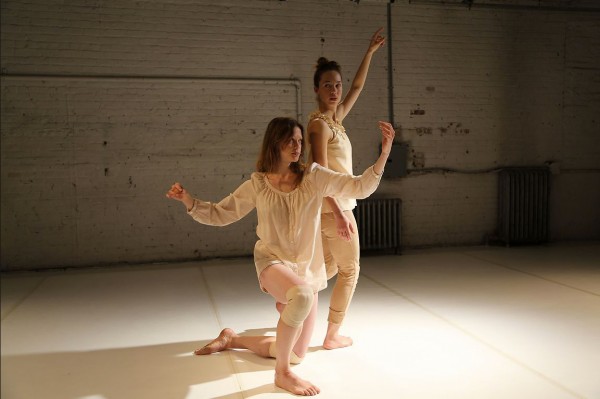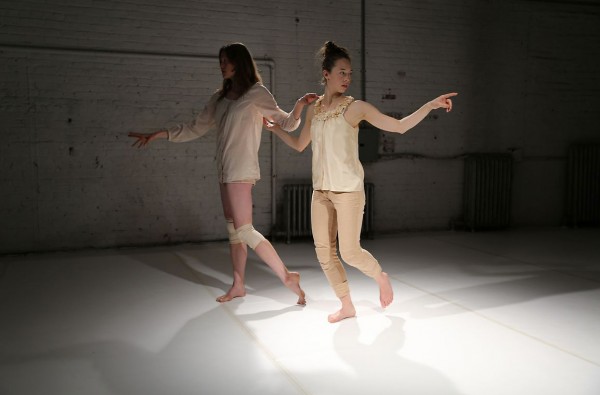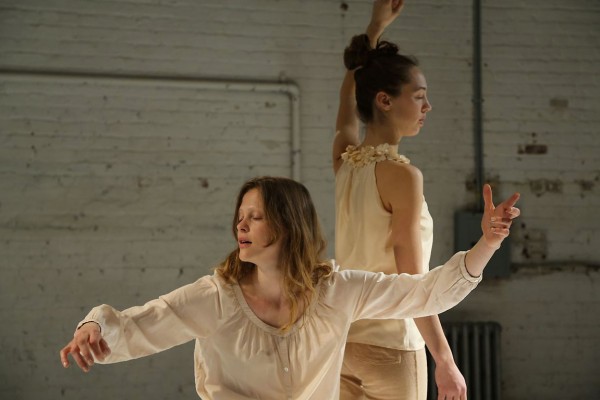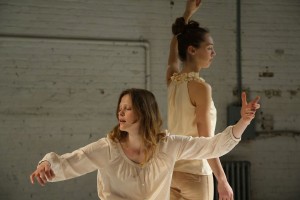-
SELF MADE MAN MAN MADE LAND, a response
by Christine Shan Shan Hou April 15, 2013

photo by Madeline Best. courtesy of Chocolate Factory Theater.
Is looking the only way to be? What a cryptic way to begin.
Two women smile at each other with wit and admiration as if one were the other’s muse coming into mortality.
A montage of facial expressions feels like a palindrome at the point of turning in on itself.
A robot points to a subtle arrangement on the ceiling.

photo by Madeline Best. courtesy of Chocolate Factory Theater.
Fingers bloom while playing a string instrument that is actually a face. More fingers hold a jaw lightly, a face frame, the beginning of another situation.
To be in the body and feel each pose reaching and swelling. This is another way to say that women are sprawling, exploratory beings.
This is another way to say two ghosts are growing and shrinking as a means of waiting and coming apart.
A full wheel reminds me of the discomfort of being upside down, reminding me of a scene from Ingmar Bergman’s The Silence.
To crabwalk is to make the body look like a contorted insect or the spirit of an old marionette.

photo by Madeline Best. courtesy of Chocolate Factory Theater.
What does it feel like to have an elbow attached to a string and then pulled away from the heart?
A stutter is the forearm collapsing into the floor. This does not ruin the form, but alters it; similar to the way a handwritten signature can alter a blank piece of paper.
Almost speaking is the moment before speech occurs. The body settles inside of it, a luminous oval.
The thought is going forward and backwards. It is about to form.
As it forms it rises from the earth.

photo by Madeline Best. courtesy of Chocolate Factory Theater.
Two women being and smiling at each other should not be confused with a secret, but the realization that to be is not the same as to want.
Ursula Eagly’s SELF MADE MAN MAN MADE LAND premiered at The Chocolate Factory on March 27, 2013. SELF MADE MAN MAN MADE LAND, a response is a poem that addresses the inexplicable and gravitational force of Eagly’s performance. These words seek to unfold, expand, and challenge what Brian Seibert of The New York Times refers to as “improvisational filler” and “precious little content” in his review published on March 31, 2013. A response is also a psychic exploration of my experience inside the work, particularly Eagly’s languorous contortions, which Seibert compared to as ‘come-ons.’


